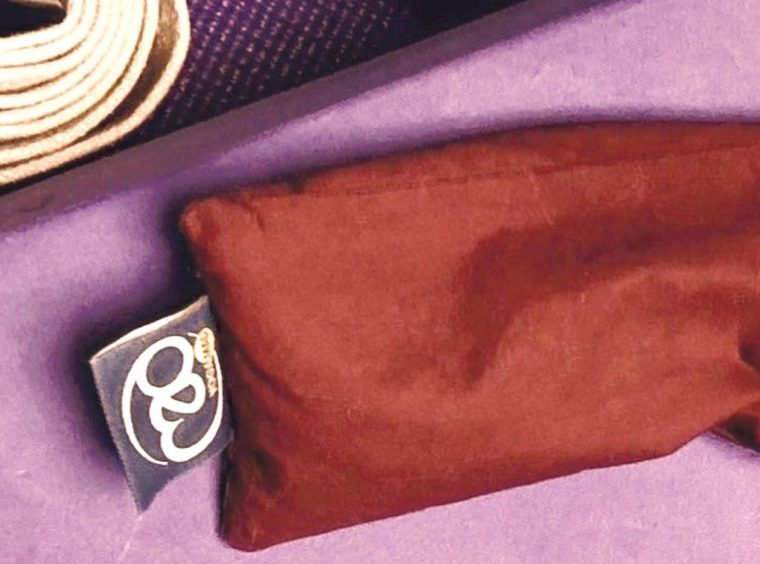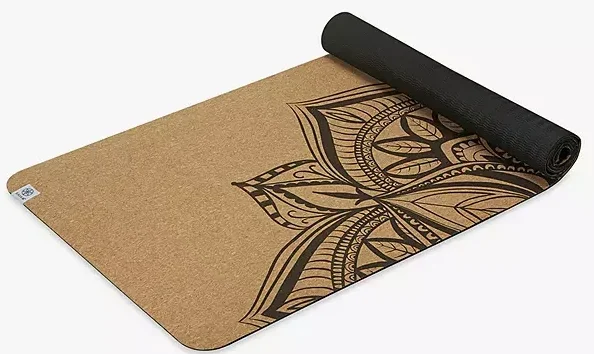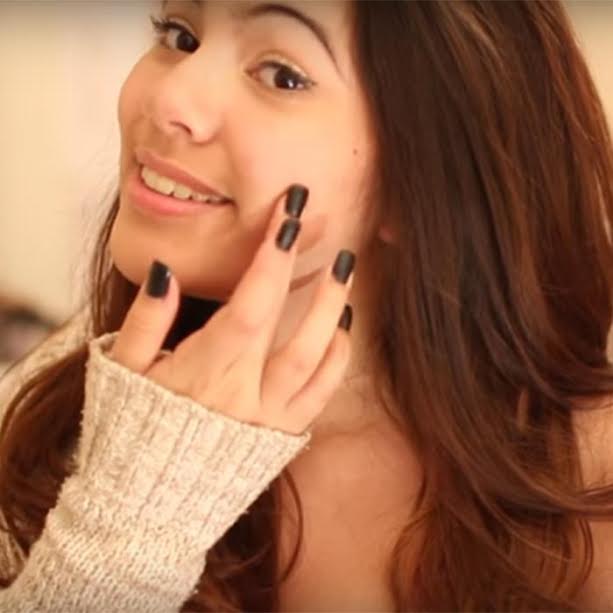Christmas is coming, and we find ourselves – once again – in that gift-buying dilemma. What do you get for the person who already seems to have everything and needs nothing else?
Maybe it’s time to dispense with the “fun” gifts that just end up in the bottom of the drawer (or in landfill)? Perhaps this is the year to put aside that backup bottle of whiskey?
Sometimes going a little off-piste is an inspiration that sparks a real change for the better. And if yoga is one thing, it’s an opportunity to take a little bit of time out. And recharge.
If you wish your friend or family member would take just a little time for themselves, yoga could be the answer. Yoga is the perfect antidote to:
- Stress and anxiety
- Sleeplessness
- Fatigue
- Depression
- Aches and pains
- Joint stiffness
- Headaches and sinus issues
- High blood pressure
- Lack of mental focus
- Hyperactivity
In fact, name an ailment, and there’s a way to relieve the symptoms with yoga.
Whether your loved one is a yoga fan already or they seriously need some calm and stillness in their lives, a yoga gift is something they’ll love and cherish for years to come. Let’s face it; it’s a much better choice than that comedy gift or yet another bottle of cologne.
Read on for our Top 5 yoga gifts for people who already have everything (but they don’t have yoga!).
How to sell yoga to a cynic
Yoga is as much a way of life as it is an energetic practice. But the common excuses are:
- I’m too stiff
- I’m not flexible enough
- I can’t get my leg behind my head
- I don’t have time
- I’ll get stuck in a pose
- Yoga is for women only
And, actually, each of those is the reason to DO yoga (apart from the last, cos it’s just not true!).
Yoga is much more than just throwing a bunch of moves. The physical stuff is the starting point for Western practice, but then we work to integrate the breath and draw attention inward.
And we find that our time on the mat becomes a little holiday from the stresses and anxieties of the day. We start to crave the stretch that brings relief from tension. We discover a type of yoga that SUITS us.
What type of yoga is best?
Well, that’s the million-dollar question. And there’s no real answer. Most types of yoga work around similar principles – they just focus on different things.
These are the most popular forms:
Iyengar yoga
Iyengar yoga focuses on alignment, direction, and precision, using props to help move more deeply into the pose (especially helpful if you have injuries).
Great for people with injuries/health conditions, Iyengar yoga is an excellent introduction for new starters because the instruction is so precise and safe. Through those meticulous instructions, you find a way to engage the brain and the breath, bringing a sense of calm, lightness, and a fantastic flow of positive energy that you take into your day.
Great first thing in the morning.
Ashtanga yoga
Ashtanga is a fast, super-energetic style of yoga that gives you a real full-body workout. Perfect for people with lots of energy to burn.
You work through a set sequence of poses, moving through them in a flow with emphasis on a heavy breath. Not for the easily exhausted.
Ashtanga brings a sense of achievement and is an excellent fat-burner.
Vinyasa yoga
Vinyasa, like Ashtanga, works by stringing poses together into a flowing sequence.
But, unlike Ashtanga, which uses the same sequence of poses each time, Vinyasa works through a different sequence each time. You work with a specific emphasis on the breath, which helps when transitioning between the poses.
The focus is on the sequence rather than the technical elements of the pose, so this form of yoga can be a little bewildering to a complete beginner, I’ve found.
However, the sequence brings calm, energy, and a sense of quietness.
Yin yoga
People often think that yin yoga is easy.
They’re wrong.
Yin is very slow – you hold most poses for around five minutes. Yin targets the connective tissues between the muscles and the limbs (rather than the muscles themselves), aiming to increase circulation to the joints and improve flexibility.
Despite its slow pace, yin yoga brings stillness and a great sense of wellbeing.
Restorative yoga
Most people confuse Restorative yoga with Yin. They’re similar in pace but are actually very different in approach.
Restorative is actually an off-shoot of Iyengar in that it uses LOTS of equipment (read on) to help get the body into the correct position.
People often think that restorative yoga is just lying on the floor with props – and, to a degree, that’s a reasonably concise summary. But that’s not ALL that restorative yoga is.
You hold each pose for anywhere between 3 and 30 minutes, and the aim is to find comfort and let go. It’s all about exerting zero effort – the aim is to relax (although relaxing does require a small amount of physical effort).
You might think that laying on the floor for an hour or so would do nothing other than send you to sleep: you’d be wrong. Sure, some people fall asleep (and there’s nothing wrong with that).
But what you get after an hour’s practice is a profound sense of positive, flowing energy and THE most tranquil mindset you can achieve without Xanax (without the tiredness).
So, onto the Christmas gifts:
#1. A yoga mat
All styles of yoga I’ve talked about so far use a yoga mat. In fact, there are very few methods of yoga that don’t use a mat.
A yoga mat does several things:
- Cushions the floor – practicing on bare floorboards can be too hard.
- Helps maintain grip – if your feet and hands slip around on the floor, the pose becomes too much effort, and you’re unlikely to achieve good alignment.
- Helps with alignment – practicing with a mat gives each movement a three-dimensional context and a point of reference.
Basic mat
There are several different types of yoga mats.
The most commonly used are these super-affordable latex-based cushioned mats, like this:
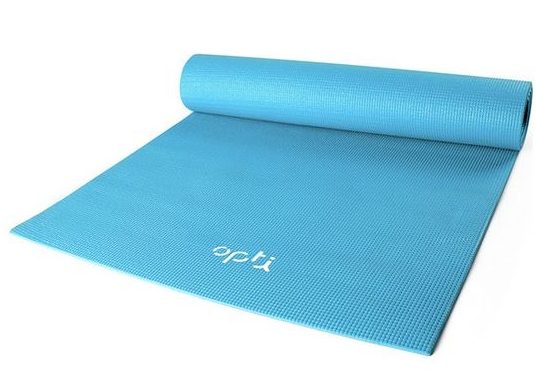
This is what you might call your basic beginner’s mat, providing some cushioning from the floor and some fairly good grip. This type of mat is definitely at the lower end of the price scale but is perfectly adequate for anyone at any stage of their yoga practice.
New mats of this style are often a little slippy at first. A quick cycle in the washing machine will remove the surface grease, making it nice and grippy.
Mats of this style are often plain in design, although you can get some really funky patterned versions, like this:
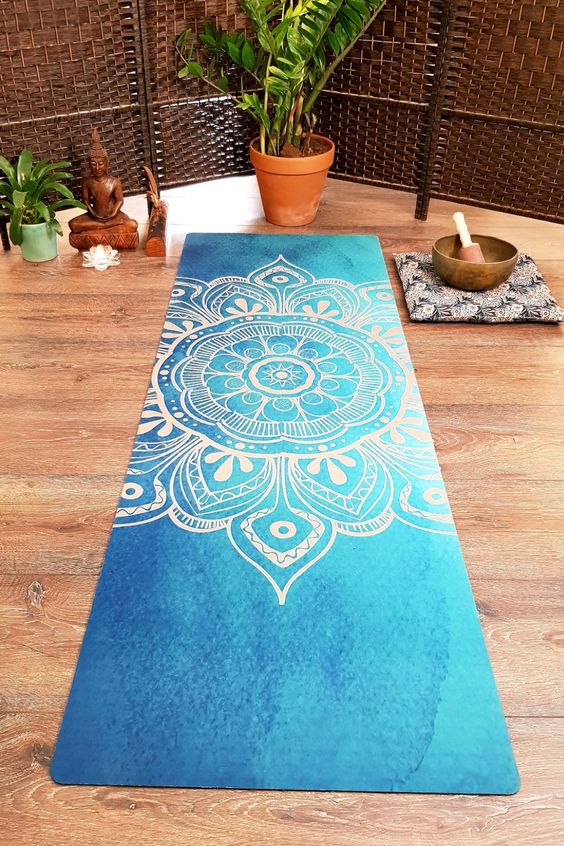
Tree Mats
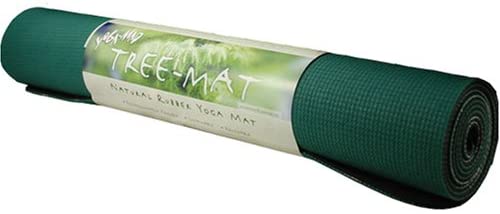
Tree mats are super-grippy. They’re much heavier to cart around because they’re thicker than your standard mat, but they’re the best type of mat, in my humble opinion.
Tree mats are more expensive than your standard mat, but the extra investment is definitely worth it for a tremendous on-the-floor experience.
Made from natural rubber, tree mats offer excellent cushioning underfoot – just the right amount of support. I think that this type of mat is the perfect thickness – anything any thicker feels too spongey, making balancing more difficult.
Latex-free mats
Some people have rubber and latex allergies – the perfect solution is a cork mat. Now, these demand a premium price, and I’ve never used one myself. But from what I understand, cork mats are excellently grippy.
And cork, of course, is more sustainable than rubber and latex, so for the eco-conscious, a cork mat could be the perfect solution.
#2. A bolster
Not all methods of yoga use bolsters – Ashtanga and Vinyasa, for example, tend just to use a mat.
But if you think that Iyengar, Yin, or restorative yogas might be the path for your gift receiver, they’ll definitely want a bolster.
There’s are several types of bolsters, ranging from the premium to simple homemade efforts, like this:
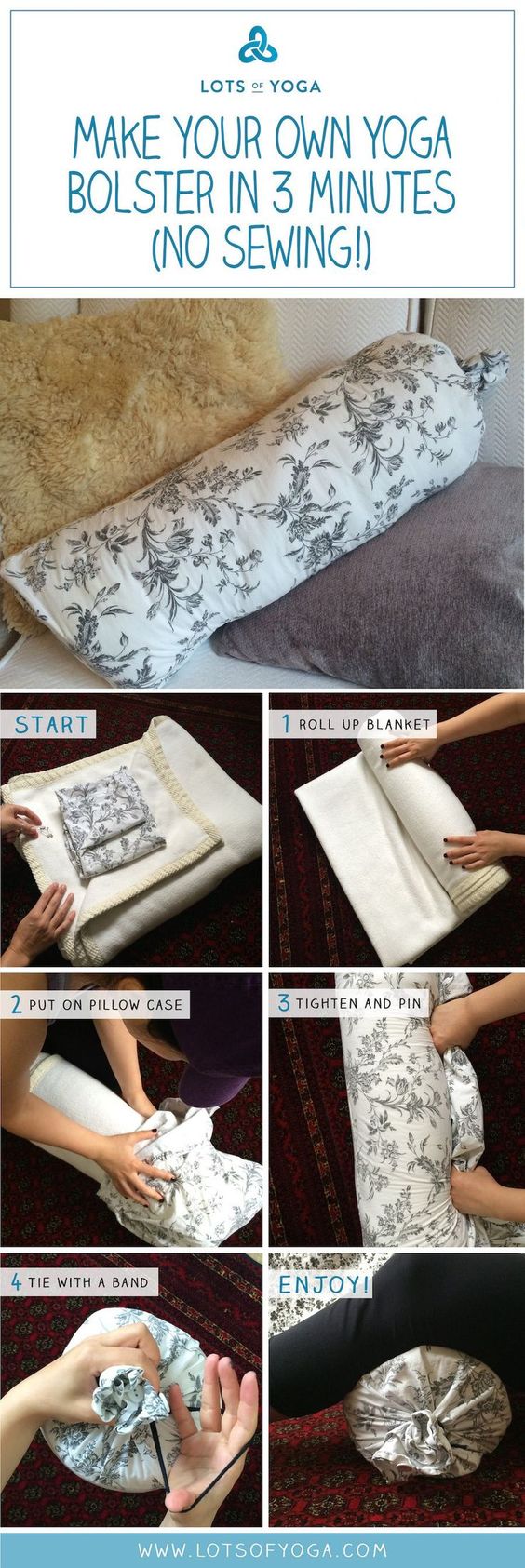
This is an excellent approach to creating your own bolster – the perfect size. So, you could get all handy and make your loved one a homemade bolster – they’ll love it all the same.
The two most commonly used bolsters are the cylindrical type – often filled with buckwheat for extra comfort and give:
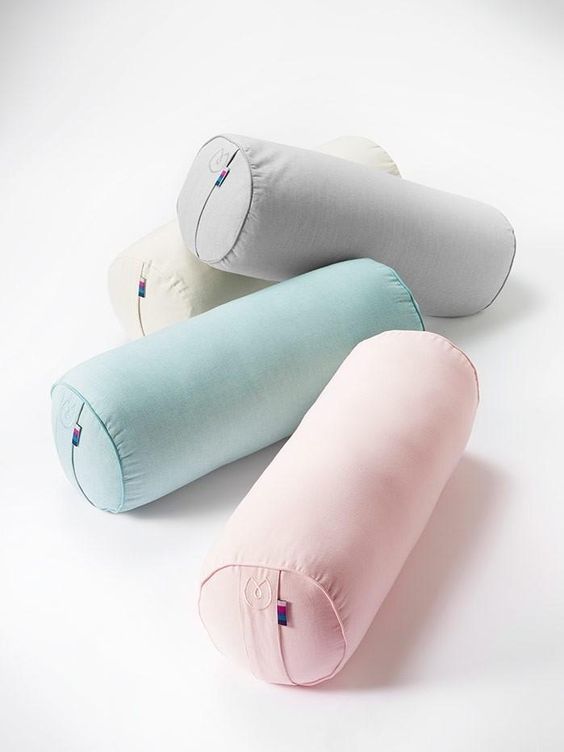
Or the oblong type, usually filled with softer stuffing – again, for extra comfort:
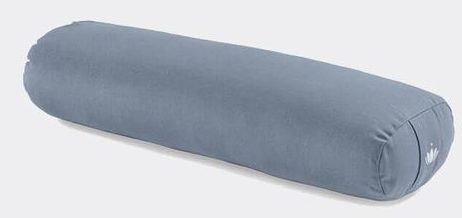
I’ve got one of each – together, they make restorative yoga a totally gorgeous experience.
Here’s an example of a restorative yoga class:
#3. A yoga strap
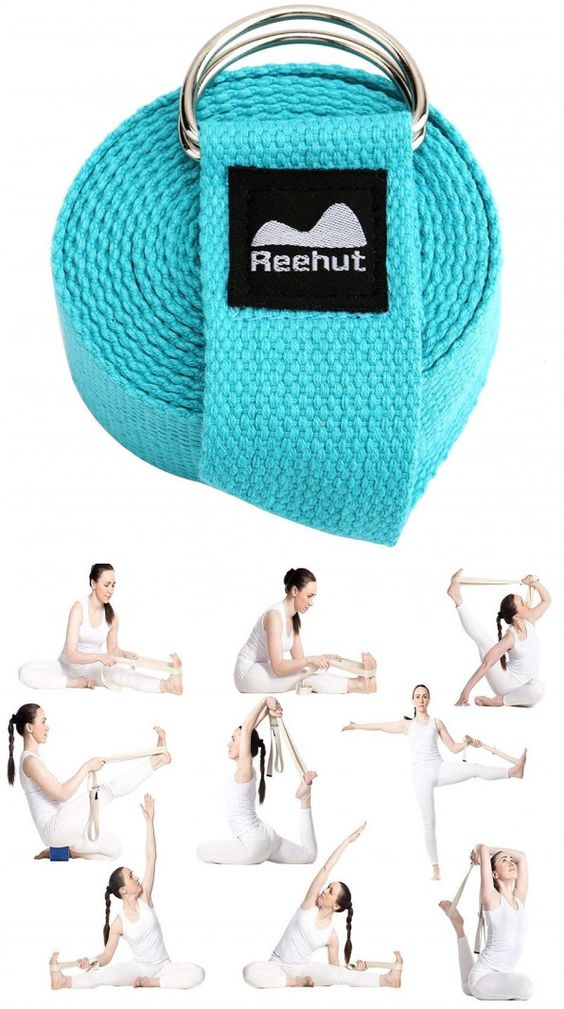
People always get a little nervous as soon as you start meeting yoga straps – it all feels like things are going to get a little kinky!
But fear not: a yoga strap is your friend and helps you reach your toes or reach your hands when your arms are behind your back in cow pose, like this:
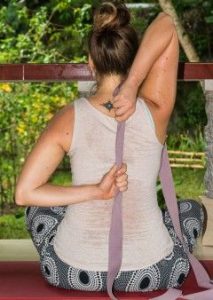
#4. Yoga blocks
Yoga blocks are helpful little things. They assist people who can’t reach the floor in standing forward bends and help lift the chest in seated positions.
There are a couple of types of blocks:
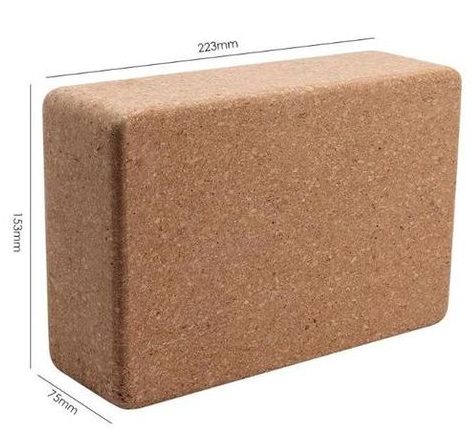
This cork block is soft to the touch and really versatile. And, of course, cork is sustainable. You can also buy blocks made from plastic or rubber.
#5. Buy a kit
Alternatively, buy a kit that contains a mat, a strap, and some blocks. Most kits don’t include bolsters, but a mat, strap, and block kit should be all your loved one needs to get started.
Happy Holidays!
So there you have it: gift ideas for the potential yogi in your life.
Yoga can transform your energy, make you FEEL taller, and change your outlook – bringing a more positive, can-do mindset to your life. Through thick and thin, yoga has been there for me when I’ve most needed it.
And yoga is a great way to start your day! Or bring it to a close, for that matter.
Thanks for reading. Happy holidays!

